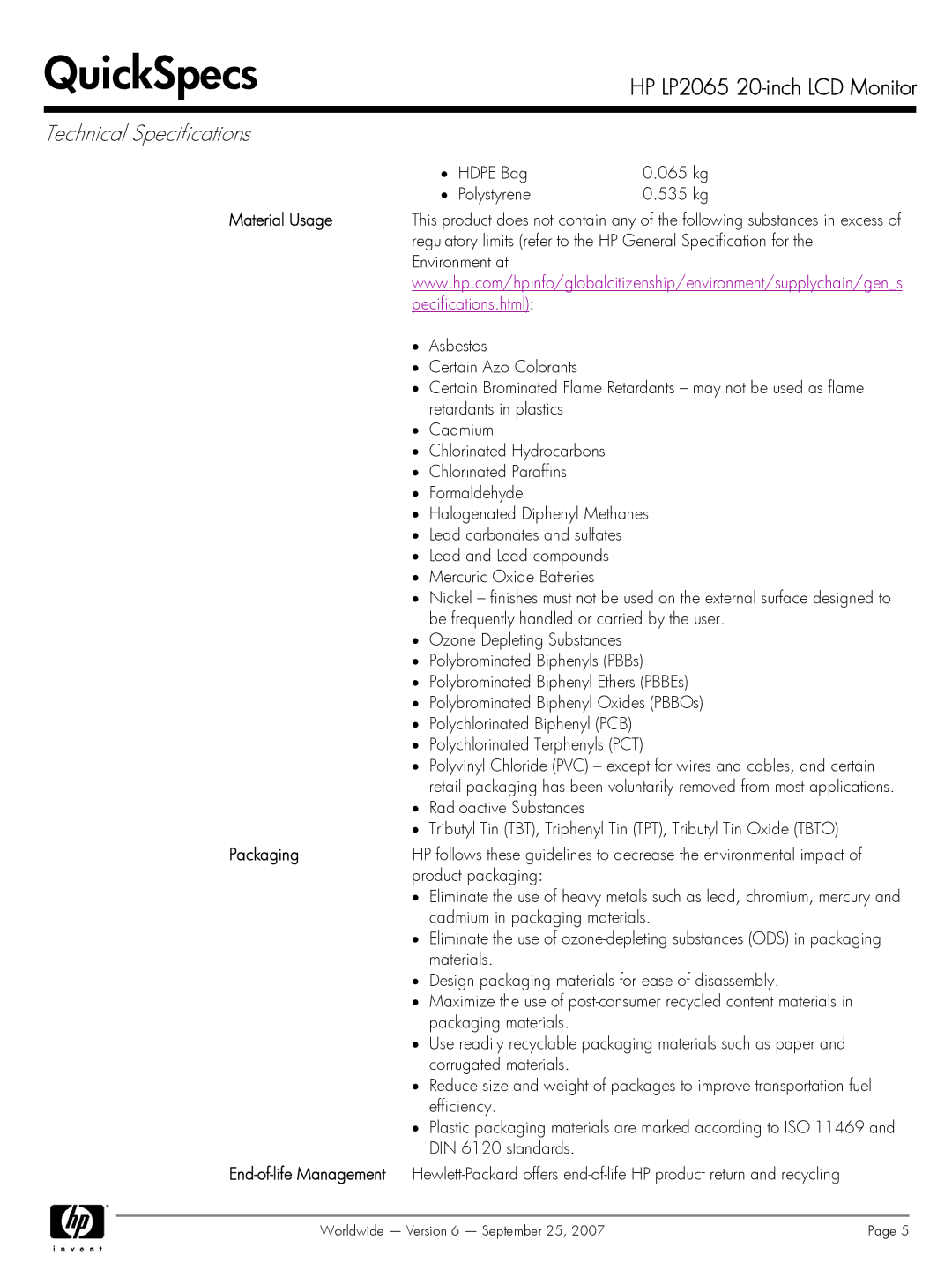
QuickSpecs
Technical Specifications
Material Usage
Packaging
HP LP2065
· | HDPE Bag | 0.065 kg |
· | Polystyrene | 0.535 kg |
This product does not contain any of the following substances in excess of regulatory limits (refer to the HP General Specification for the Environment at www.hp.com/hpinfo/globalcitizenship/environment/supplychain/gen_s pecifications.html):
·Asbestos
·Certain Azo Colorants
·Certain Brominated Flame Retardants – may not be used as flame retardants in plastics
·Cadmium
·Chlorinated Hydrocarbons
·Chlorinated Paraffins
·Formaldehyde
·Halogenated Diphenyl Methanes
·Lead carbonates and sulfates
·Lead and Lead compounds
·Mercuric Oxide Batteries
·Nickel – finishes must not be used on the external surface designed to be frequently handled or carried by the user.
·Ozone Depleting Substances
·Polybrominated Biphenyls (PBBs)
·Polybrominated Biphenyl Ethers (PBBEs)
·Polybrominated Biphenyl Oxides (PBBOs)
·Polychlorinated Biphenyl (PCB)
·Polychlorinated Terphenyls (PCT)
·Polyvinyl Chloride (PVC) – except for wires and cables, and certain retail packaging has been voluntarily removed from most applications.
·Radioactive Substances
·Tributyl Tin (TBT), Triphenyl Tin (TPT), Tributyl Tin Oxide (TBTO)
HP follows these guidelines to decrease the environmental impact of product packaging:
·Eliminate the use of heavy metals such as lead, chromium, mercury and cadmium in packaging materials.
·Eliminate the use of
·Design packaging materials for ease of disassembly.
·Maximize the use of
·Use readily recyclable packaging materials such as paper and corrugated materials.
·Reduce size and weight of packages to improve transportation fuel efficiency.
·Plastic packaging materials are marked according to ISO 11469 and DIN 6120 standards.
Worldwide — Version 6 — September 25, 2007 | Page 5 |
